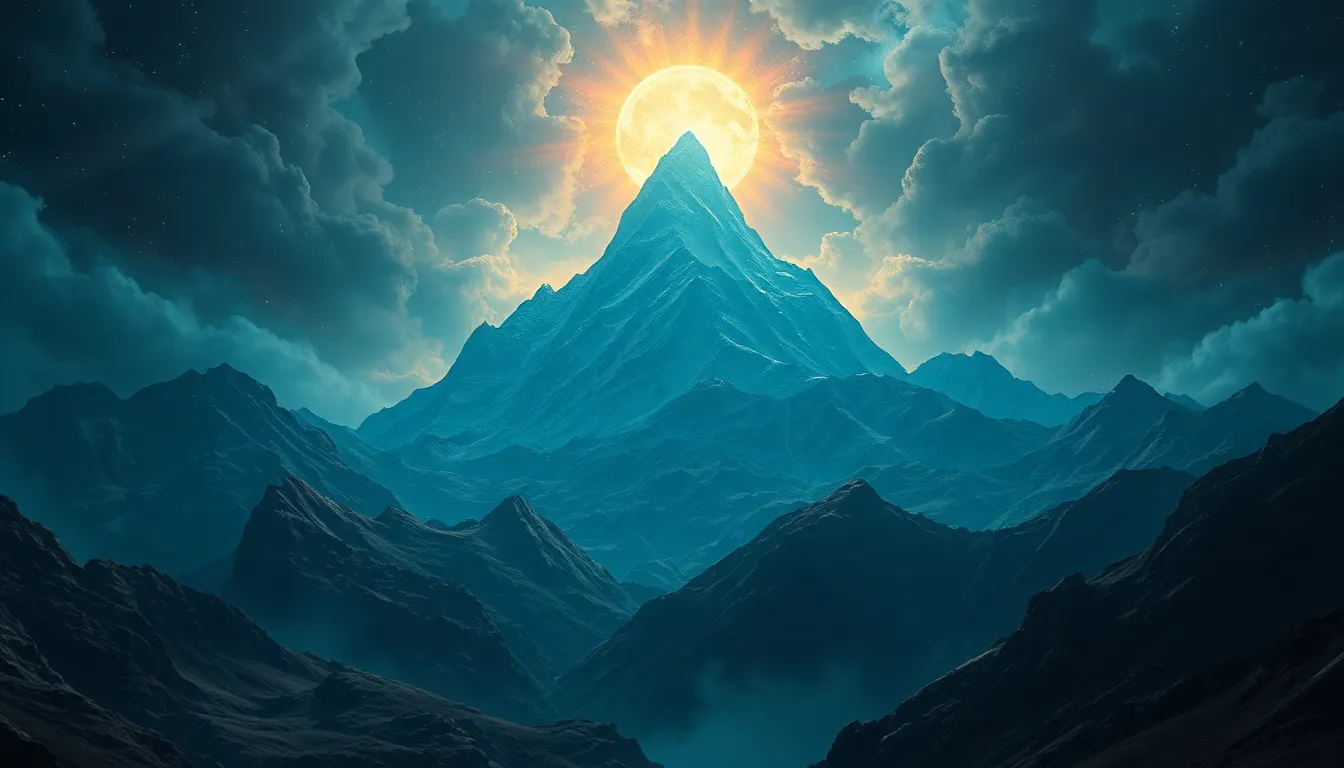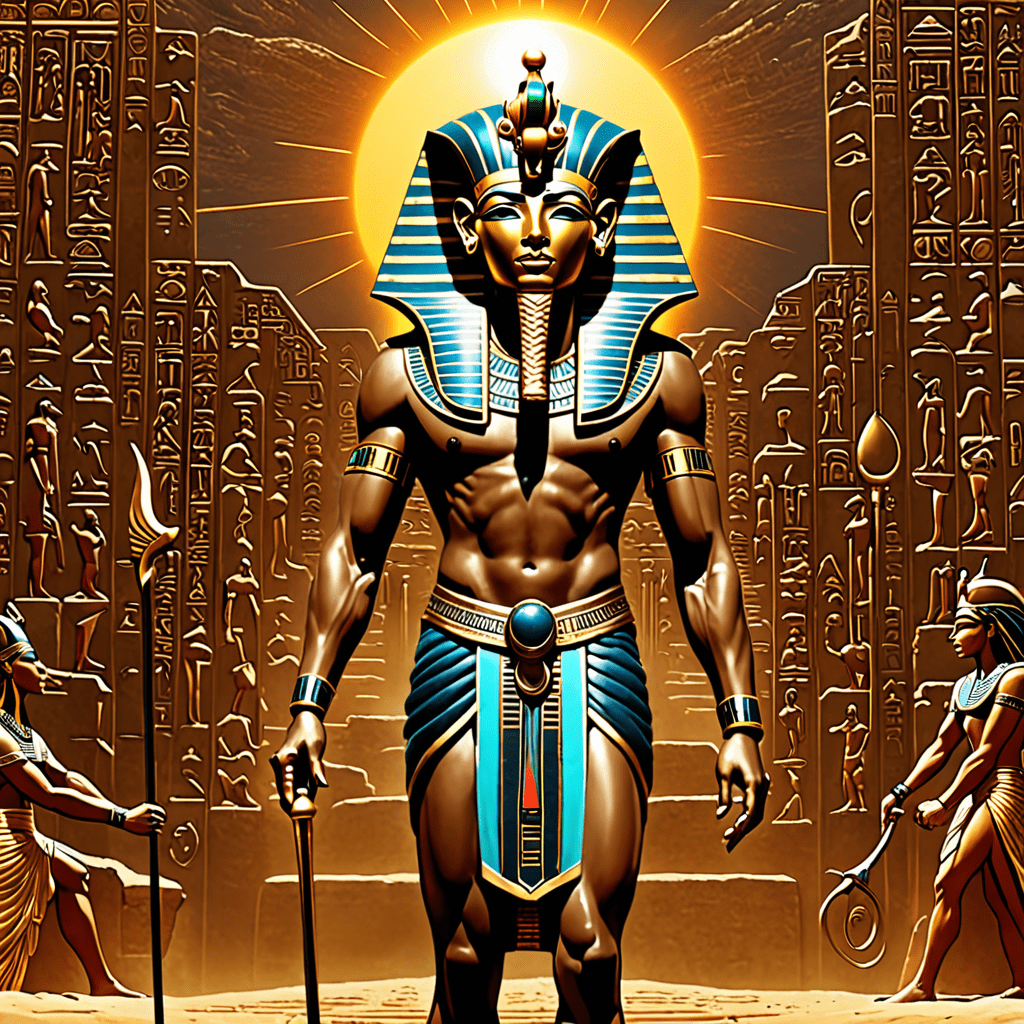The Mountain of the Dreamers: Legends of Aspirations and Visions
I. Introduction
The “Mountain of the Dreamers” serves as a powerful symbol in various cultures, representing the aspirations and visions that drive humanity. This legendary mountain embodies the hopes and dreams of individuals who seek to achieve greatness, overcome obstacles, and realize their potential. In this article, we will explore the significance of this mountain in folklore, its historical context, and its role as a metaphor for personal growth.
The purpose of this article is to delve into the rich tapestry of legends surrounding the Mountain of the Dreamers, examining how these stories reflect our inherent desire for fulfillment. Throughout history, dreams and aspirations have played a crucial role in shaping cultures, inspiring individuals to strive for more than their current circumstances allow.
From ancient mythologies to modern interpretations, the concept of dreams transcends cultural boundaries, illustrating the universal nature of human ambition.
II. Historical Context of the Mountain of the Dreamers
The origins of the legend of the Mountain of the Dreamers can be traced back to various folklore and mythological traditions around the world. Each culture has its unique narrative, yet they all convey a similar message about the significance of dreams.
- Greek Mythology: The Greeks believed in the concept of aspirational mountains, where heroes would embark on quests to fulfill their destinies.
- Native American Folklore: Many tribes have legends of sacred mountains that serve as places for vision quests and personal transformations.
- Eastern Philosophies: In many Eastern traditions, mountains symbolize the path to enlightenment and self-discovery.
Key historical figures associated with the mountain include mythological characters such as Hercules and indigenous leaders who sought spiritual guidance from these towering landscapes. As the dreamer archetype evolved, it became a representation of the human spirit’s resilience and determination.
III. Symbolism of the Mountain
The Mountain of the Dreamers functions as a powerful metaphor for personal growth and achievement. Climbing a mountain requires perseverance, dedication, and courage—qualities that are essential for turning dreams into reality.
- Personal Growth: The ascent symbolizes the journey each individual must undertake to realize their aspirations.
- Cultural Interpretations: In various cultures, mountains are seen as sacred places that offer wisdom and enlightenment.
- Challenge and Sanctuary: While the mountain represents challenges to overcome, it also serves as a sanctuary for reflection and renewal.
IV. Legends and Myths Connected to the Mountain
Across cultures, numerous legends feature the Mountain of the Dreamers, showcasing diverse interpretations of aspirations. For instance:
- Greek Legends: The story of Persephone, who journeys to the underworld and back, symbolizes the cyclical nature of dreams and aspirations.
- Native American Myths: The tale of the Great Spirit guiding individuals to their vision quests emphasizes the importance of guidance in realizing dreams.
- Eastern Fables: The journey to the summit of sacred mountains like Mount Meru represents the quest for enlightenment and purpose.
Common themes in these legends include the struggle against formidable odds, the search for identity, and the transformative power of dreams. The supernatural elements often play a vital role in shaping these narratives, illustrating how the divine interacts with human aspirations.
V. Aspirational Stories from the Mountain
In contemporary society, many individuals have drawn inspiration from the Mountain of the Dreamers, leading to powerful personal narratives. These stories resonate deeply within communities, reflecting the enduring human spirit.
- Personal Narratives: Individuals who have faced adversity and emerged stronger often share their journeys as a testament to the mountain’s symbolism.
- Contemporary Figures: Influential figures in fields like technology, sports, and the arts embody the spirit of the dreamer, inspiring others to pursue their passions.
The impact of these stories on society is profound, as they encourage collective aspirations and foster a sense of community. By sharing their journeys, dreamers motivate others to pursue their own dreams, creating a ripple effect of inspiration.
VI. The Psychological Aspects of Dreaming
The science of dreams reveals their significance in human psychology. Dreams serve not only as reflections of our subconscious but also as motivators that can guide our actions and aspirations.
- Aspirations and Mental Well-Being: Research indicates that having clear goals and aspirations can lead to improved mental health and life satisfaction.
- Human Desire for Fulfillment: The legend of the Mountain of the Dreamers encapsulates the universal longing for purpose and meaning in life.
VII. Art and Literature Inspired by the Mountain of the Dreamers
The Mountain of the Dreamers has inspired countless artistic and literary works, capturing the essence of dreams and aspirations. Artists have depicted the mountain in various forms, illustrating its majestic beauty and symbolic significance.
- Artistic Works: Paintings, sculptures, and installations often reflect the struggle and triumph associated with climbing the mountain.
- Literature: Many authors have explored themes of aspiration and personal growth in their writings, drawing parallels to the mountain.
These representations influence public perception of dreams, reinforcing the idea that aspirations are both noble and attainable.
VIII. Modern Interpretations and Adaptations
In contemporary media, the legend of the Mountain of the Dreamers has been adapted in various forms, including film, music, and literature. These adaptations resonate with modern audiences, emphasizing the relevance of dreams in today’s world.
- Film and Music: Many movies and songs depict the journey of the dreamer, highlighting themes of resilience and hope.
- Resurgence of Interest: In today’s fast-paced society, there is a growing interest in mindfulness and pursuing one’s dreams.
New-age interpretations of the Mountain of the Dreamers often blend traditional narratives with contemporary themes, fostering a deeper connection with audiences.
IX. The Journey of the Dreamer
The journey of pursuing dreams is symbolically represented by climbing the mountain. This journey consists of several stages:
- Setting Goals: Identifying aspirations and defining what success looks like.
- Facing Challenges: Overcoming obstacles and setbacks that arise during the pursuit.
- Seeking Support: Building a community of like-minded individuals who provide encouragement and guidance.
Challenges faced by dreamers, such as fear, self-doubt, and external obstacles, can be overcome through resilience and a strong support network. The importance of community is paramount, as shared experiences foster motivation and accountability.
X. Conclusion
The Mountain of the Dreamers stands as a testament to the power of aspirations and visions in shaping human experiences. By exploring its rich history, symbolism, and impact on culture, we gain insight into our collective journey towards fulfillment. As we continue to climb our own mountains, let us remember the legends that inspire us and the dreams that propel us forward.




